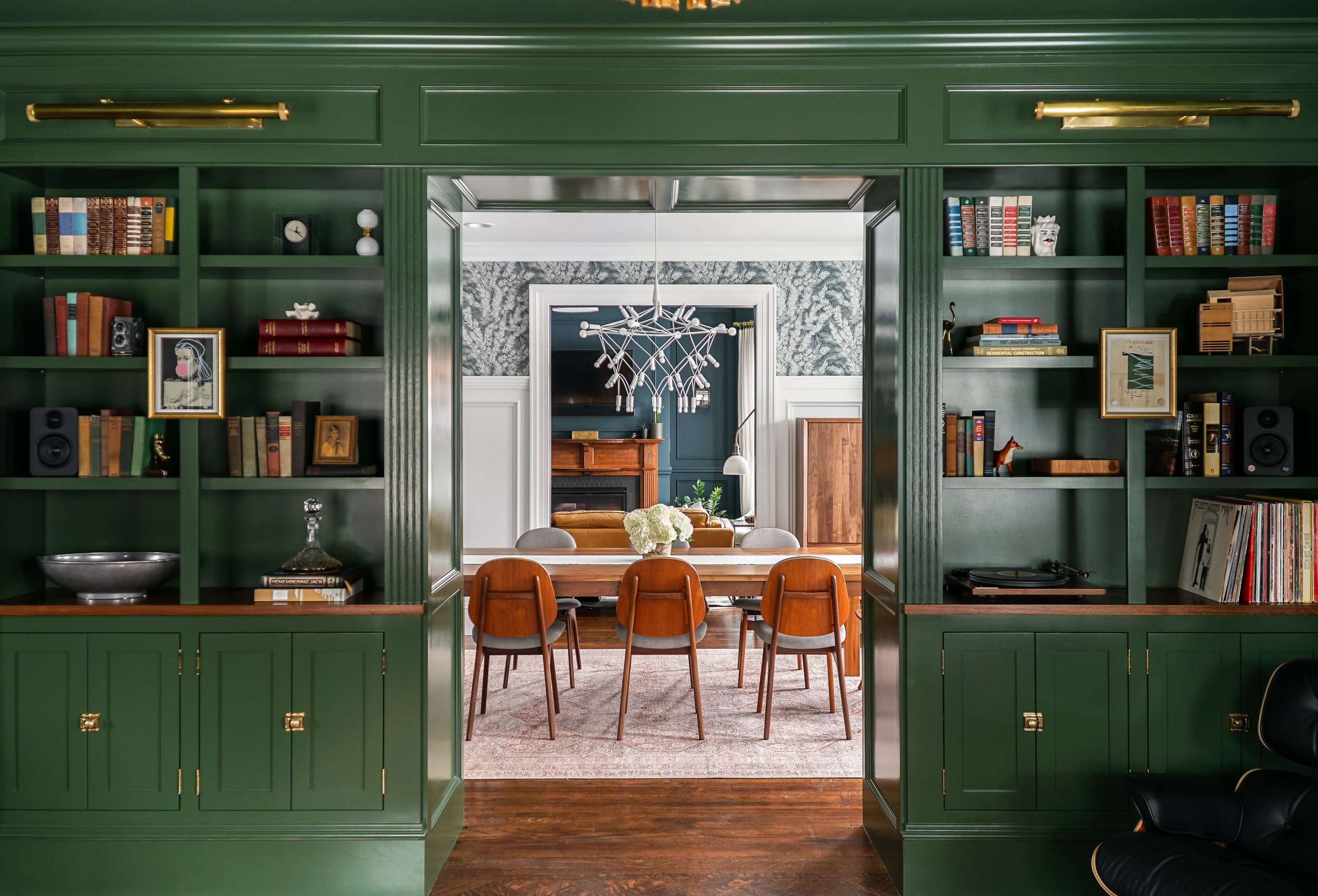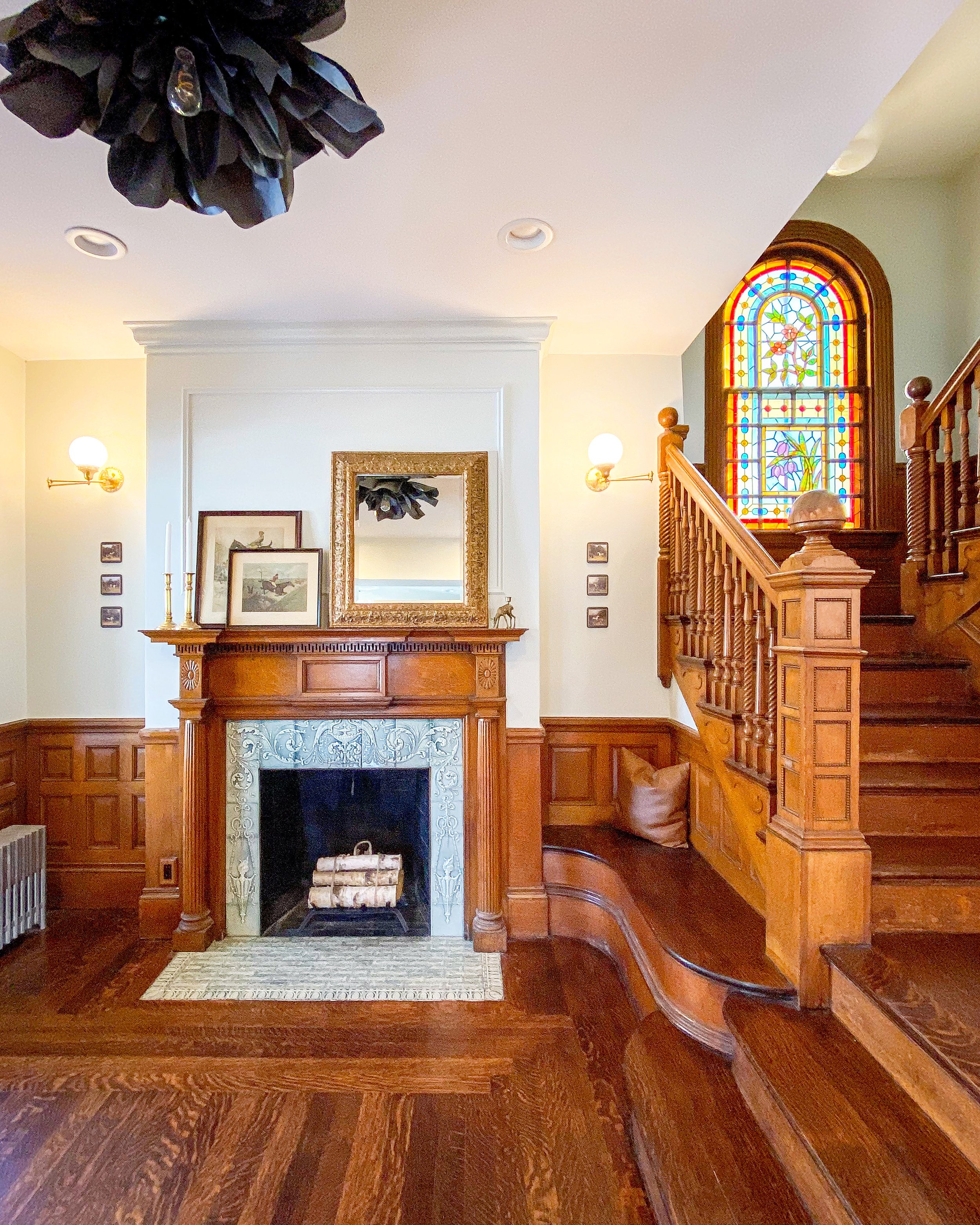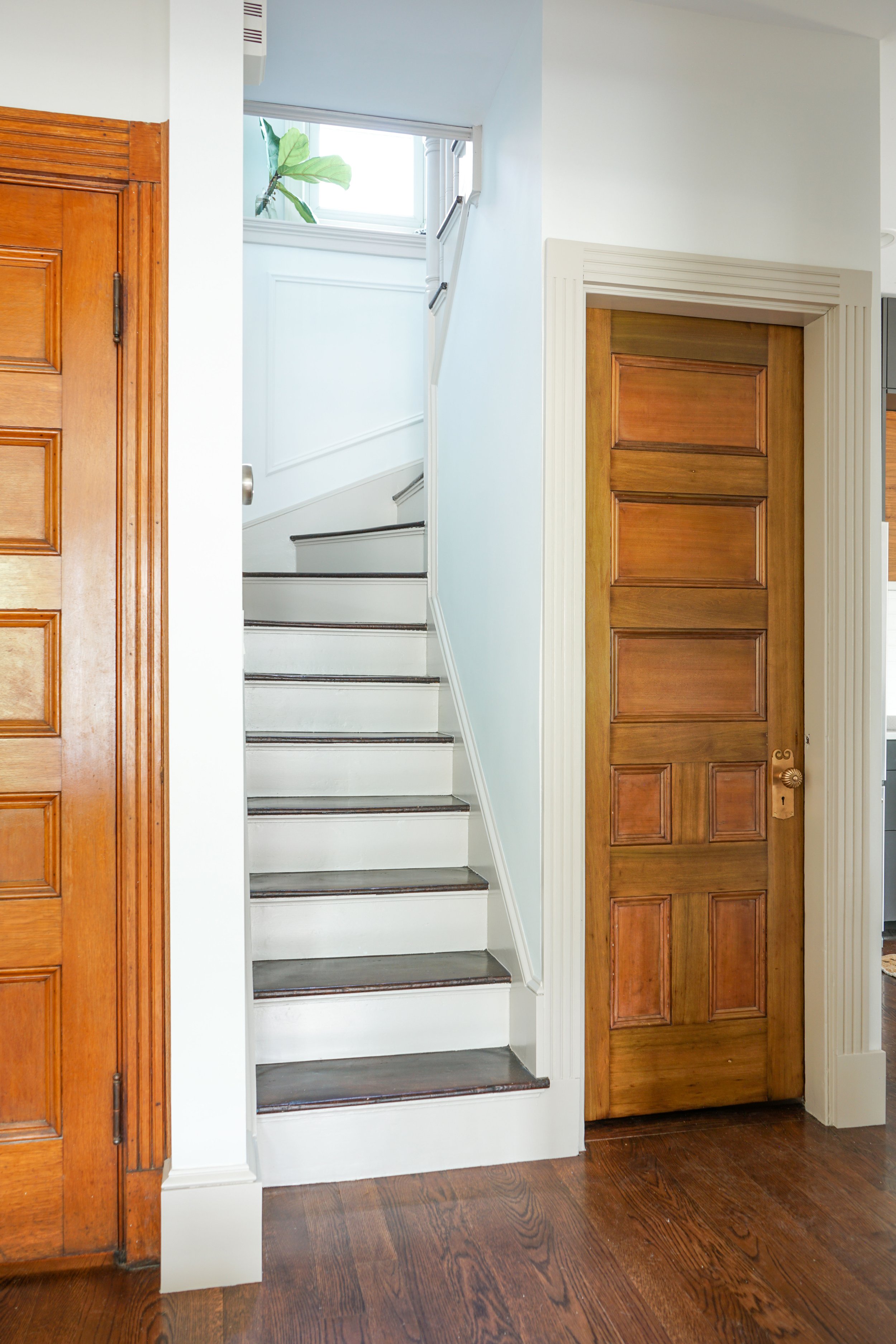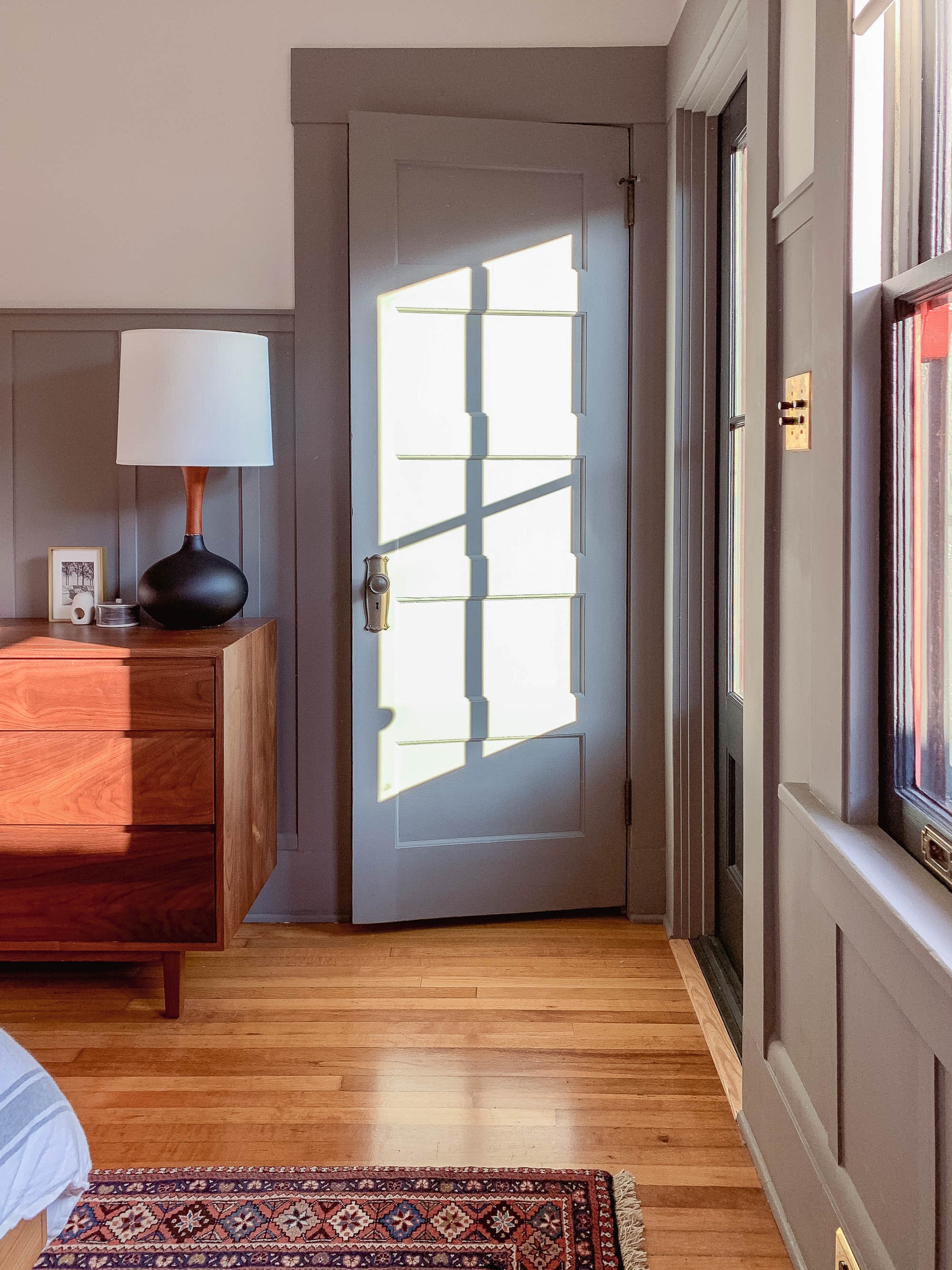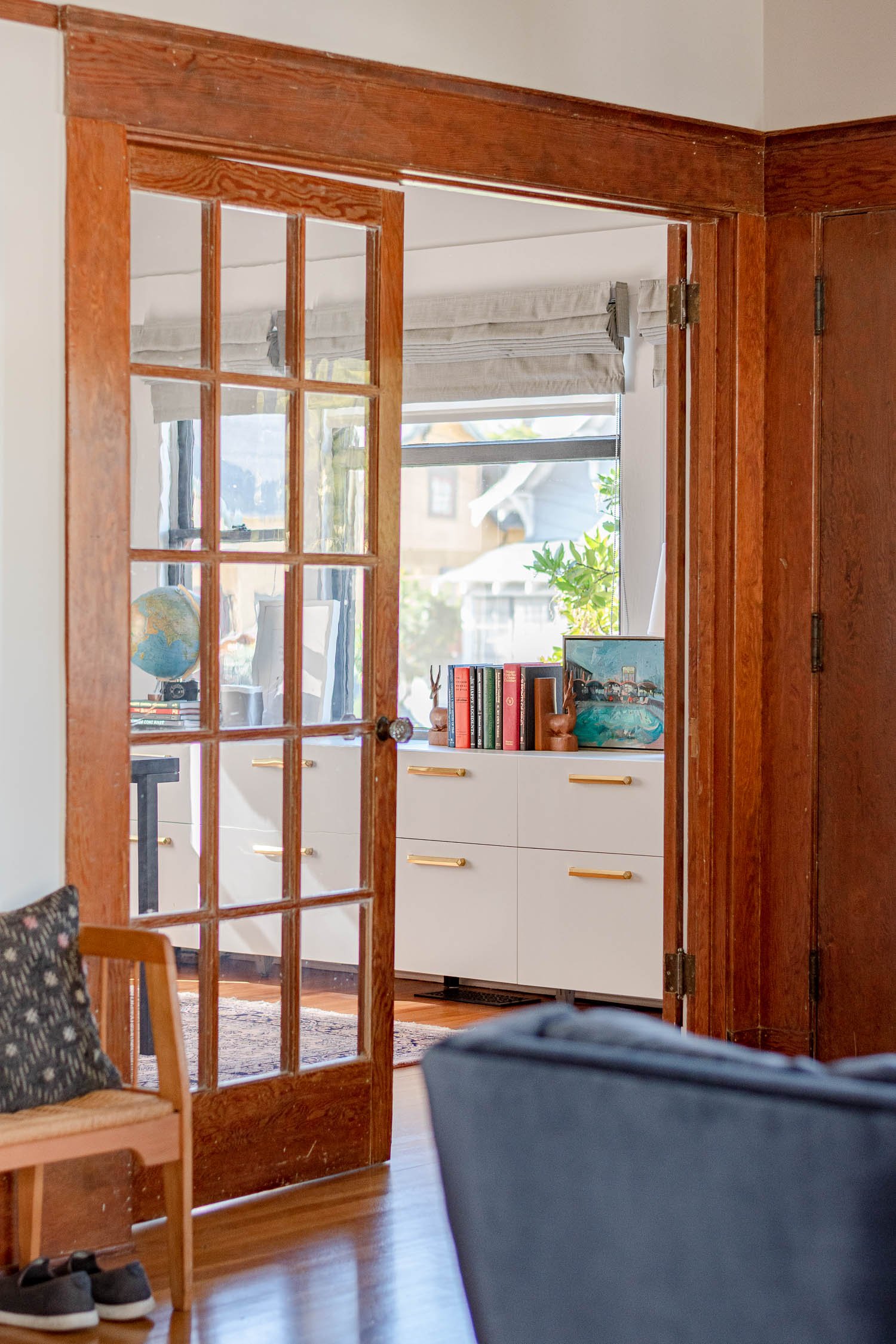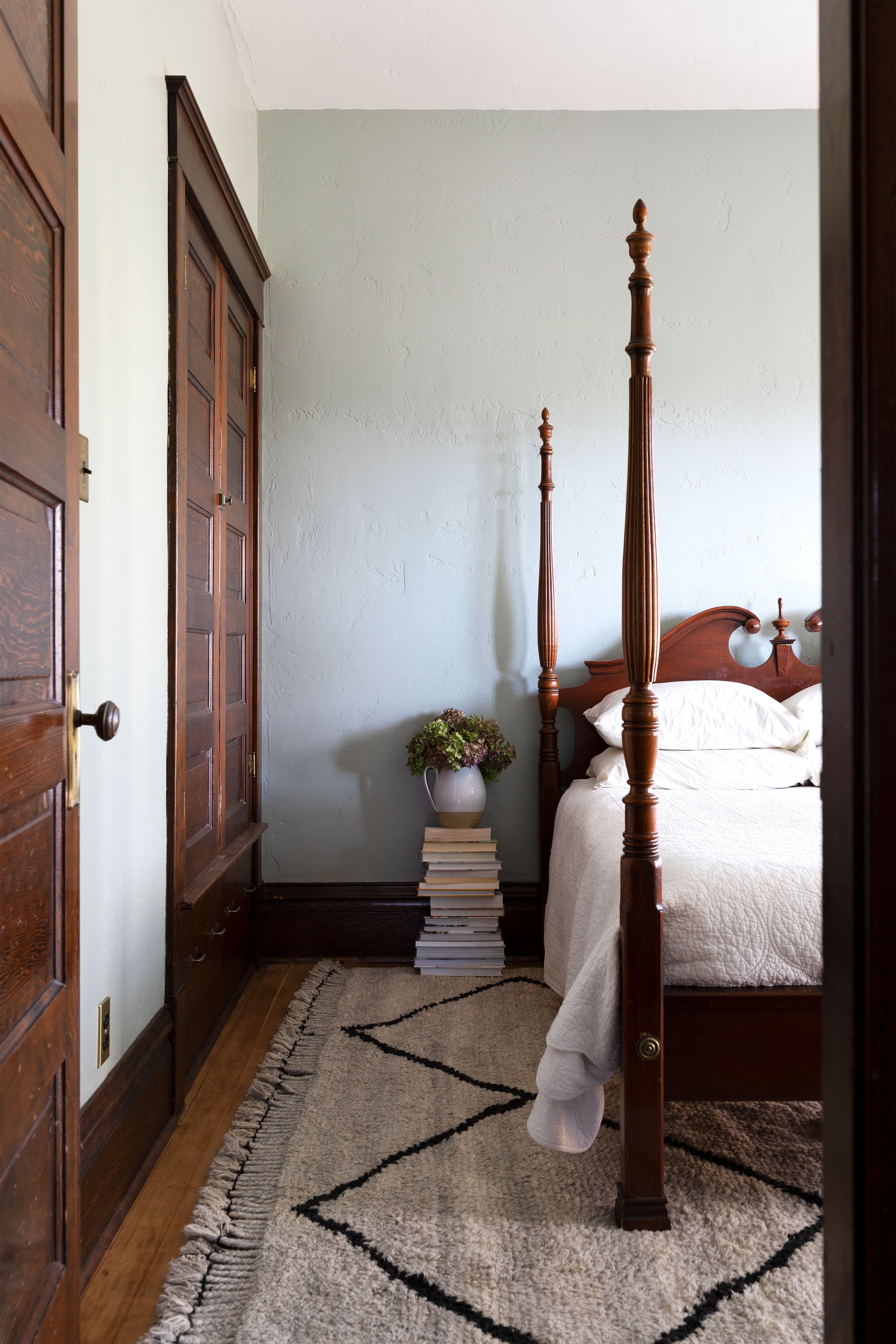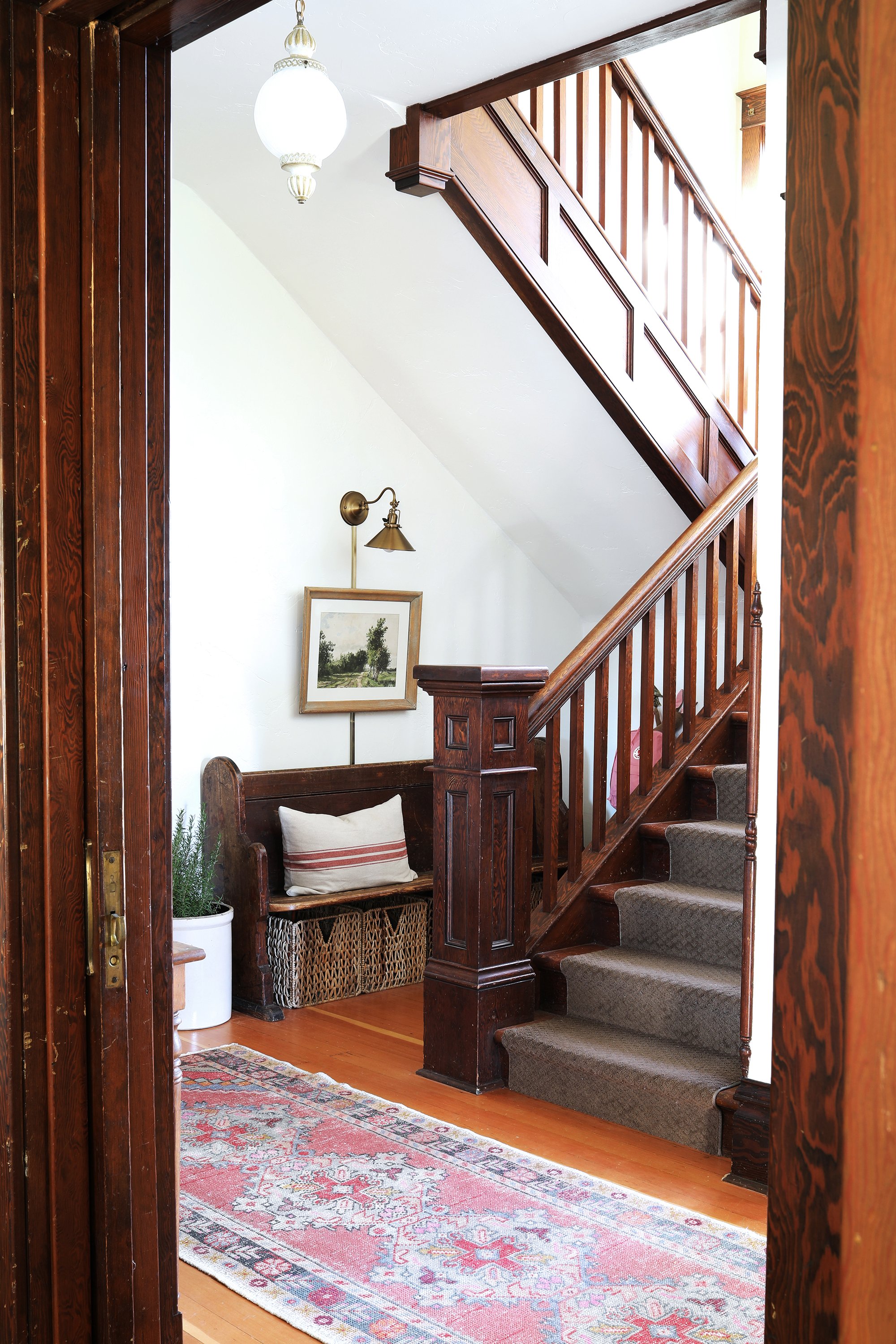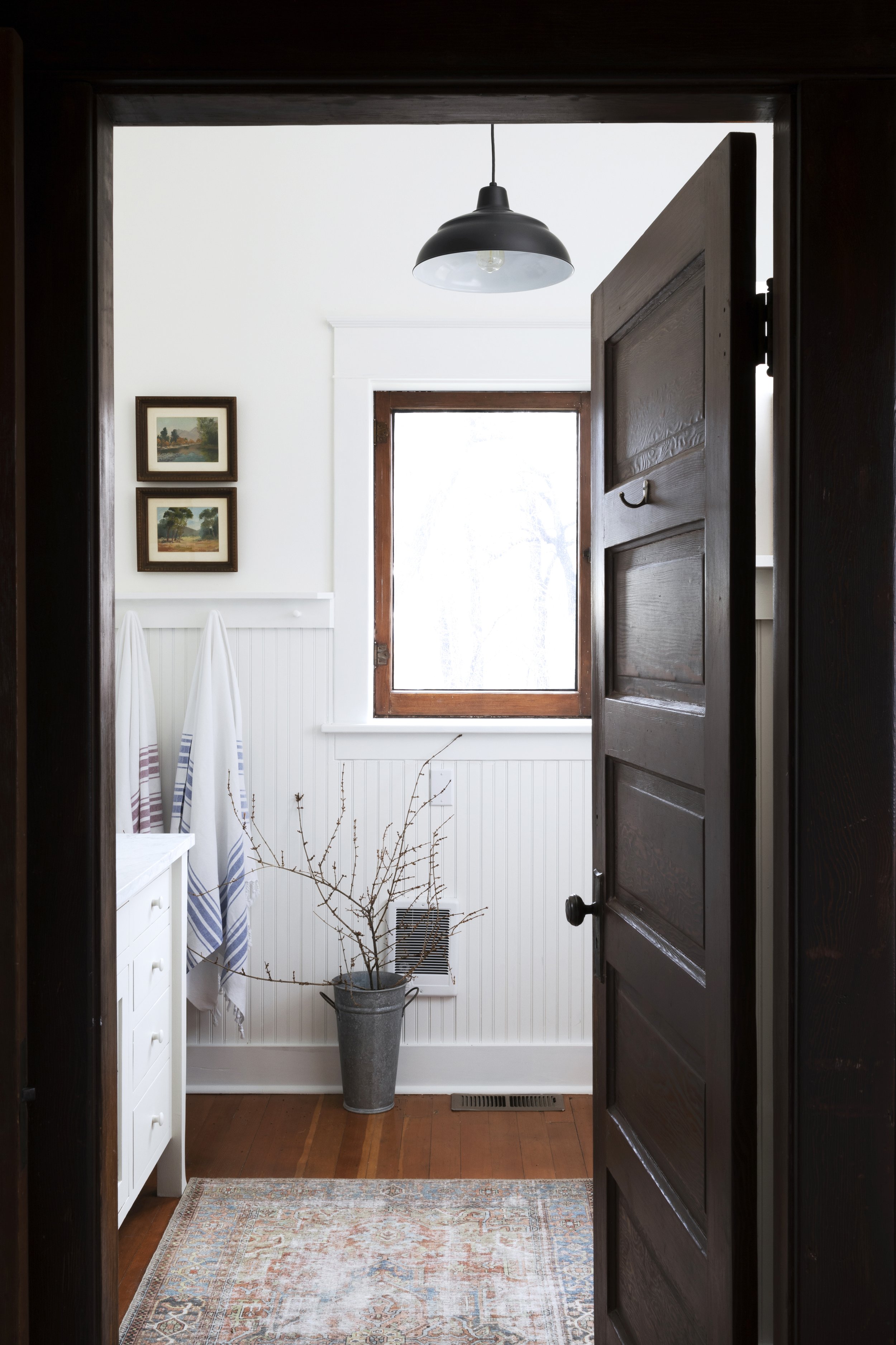"Should I paint my wood trim?"
Today we’re diving into the topic of painting (or not!) wood moulding…
“Should I paint my wood trim?” We’ve run up against this question many times over the years, both from readers and in our own projects. I struggle with an answer because while my old-house-loving gut reaction is NO!!! – original, unpainted woodwork is a rare treat in old houses plus I’m reluctant to make lasting design alterations to original architecture in houses that have been around longer than I have - but there are different views, differing house styles, and just so many things to consider when deciding whether or not to paint woodwork in your own home. So I put the question to 5 designer/blogger/renovator friends I admire and they delivered some wonderful perspectives and beautiful inspiration for both painted and unpainted woodwork. Let’s get to it…
Renovation Husbands
Stephen and David
Queen Anne Victorian, 1893
Have you chosen to paint any unpainted woodwork in your house, left it unpainted, or a mix of the two? What went into that decision?
Generally, we tend to subscribe to the rule: "If it’s not painted, don’t paint it" in the context of homes considered to be historical. We find natural woodwork to be SO beautiful and easily worked into so many styles.
Our current home is a bit unique in that it was nearly entirely gutted when we bought it. The prior owner had stripped the interiors of much of the original woodwork with the exception of a few items. The biggest showstopper in our home (we think) is our home’s entry with the original wood paneling, fireplace, and integrated staircase - luckily this was maintained and we knew right away it needed to stay in its original, natural glory. In the basement, we found another mantel, pantry cabinet doors, and a limited stack of the original door and window trim. In most cases we have chosen to celebrate the natural beauty of the items that were salvaged. The mantel is now the focal point of our living room, the pantry doors will be integrated into our new kitchen pantry and kept natural to highlight its history.
Of course, there are exceptions to the aforementioned rule! That stack of original trim? Since there was not enough to trim-out the entire house or room we’ve tried to include it in the house where we can. You can find original trim in the parlor as the vertical stiles of the built-in, painted to integrate with the rest of the new millwork. More recently, we used it as basement door casing, in which we painted it to match the surrounding stairs and beadboard. In both of these instances there has been an effort to salvage existing trim by integrating it throughout our home.
Have you ever regretted your choice to paint or not to paint?
Quite the contrary. In the living room, we initially considered painting the mantel in order to blend into the tone-on-tone look. We are so happy we didn’t as the natural wood became our favorite focal point. As for that trim we decided to re-purpose and paint, we still feel very good about it. We feel that salvaging trim, even when painted, is prefered (and even celebrated) to ending up in a landfill or sitting unused in a basement.
Faux Martha
Melissa Coleman
2 parts A-Frame and 1-part chalet built from a kit, 1970s
Have you chosen to paint any unpainted woodwork in your house, left it unpainted, or a mix of the two? What went into that decision?
It wasn’t until moving to Minnesota that I first learned that painting your woodwork is controversial. People have really strong feelings about it. We live in a mostly white, new-ish construction where one room leads to the next. It’s hard to know where to start and stop painting, so we painted it all white, and we didn’t have to make the hard decision of whether or not to paint the woodwork in our house. There was no history. But when we bought a cabin to restore, with the intention of it being a rental property, we wanted to find something that was worth preserving/restoring, something that might transport you to a slower time of life. For that reason, we made the decision not to paint any of the walls and preserve the original woodwork. In the same way, one room leads to the next in the A-Frame making it incredibly hard to know where to start and stop if we were to add paint. It’s dark and moody and different from the everyday. We love it for those reasons. We did however use cabinetry and furniture to add pops of color. Do I think there are black and white rules to this decision? Definitely not. History is full of rebels with a paint brush.
Have you ever regretted your choice to paint or not to paint?
We made a hard and fast rule not to paint the cabin from the outset. That left very little room for regret. I;m a big believer in creating a set of rules or parameters when you start a project so that you know how to finish it. We did the same on the cabin.
Have you chosen to paint any unpainted woodwork in your house, left it unpainted, or a mix of the two? What went into that decision?
When we bought our house, the woodwork throughout had been stripped by the previous owner. This was a major selling point as we love the history and warmth of unpainted woodwork! However, once we took a closer look, we realized that so much of the wood was damaged by either termites, neglect, or reckless sportsmanship (using doors as practice for knife throwing?!). We also realized that much of the wood was lower-grade lumber that was (most likely) designed to have been painted originally! It’s very common for old houses to have originally painted woodwork in bedrooms and spaces that guests didn’t visit in an effort to save money by using cheap lumber that would be covered with paint. These homes had money put towards nice stain-grade wood where guests could admire it in living and dining rooms. And, in some modest homes, all of the wood was lower-grade and designed to be painted - we think our home just might be one of those. We aren’t sure, but we felt that painting the bedroom trim was the right thing to do because of the poor condition. I preferred to keep the damaged wood in place and patched with putty and paint so I could enjoy the craftsmanship of the original wood. The alternative would have been to send the original wood to the dump and replace the molding with visible patches of replacement lumber - which didn’t feel in keeping with the history.
All this being said, we kept the living room, dining room, and hallway unpainted! The woodwork in these rooms is in much better shape, fits the house, and adds so much warmth - even though some of the door panels aren’t the fanciest cuts of lumber.
Have you ever regretted your choice to paint or not to paint?
I don’t regret it and I love enjoying the profiles of the beefy door casings, the chunky baseboards, and the window details in our bedrooms. While I painted some of my woodwork, I do still advocate for not painting woodwork that was designed to be unfinished! Century-old lumber is unlike wood today and I adore seeing unpainted wood!
Have you chosen to paint any unpainted woodwork in your house, left it unpainted, or a mix of the two? What went into that decision?
When we first moved into our home in 2011, the woodwork was beautiful, but had lots of paint splatters and imperfections. We lived with it “as is” for a few years until we had the budget to have both the original trim and floors refinished. We tried to keep it as true as it was in its original state as far as stain color. Because it was all primarily red, quarter sawn oak with beautiful grain, we opted to stain all of it instead of painting. The greatest challenge with this has been finding wall colors/ wallpaper and furniture that fits in well with the wood since it’s such a statement.
A rental home we own also had wood trim throughout however, we decided to replace some with mdf and paint the rest because it was pine and in terrible condition. I think the decision to paint vs. stain for us, relies heavily on the condition and type of wood it is.
Have you ever regretted your choice to paint or not to paint?
While I have not regretted the decision to stain the wood in our home, as I mentioned, it has limited the style and some of the spaces- it’s important to me that everything flows well with the wood. There may be one room that I decide to go against the grain (pun intended 😉) and that project is coming up! I really want vertical paneling in the room and also want it to have a monochromatic feel.
Beginning in the Middle
Catherine and Bryan Williamson
1900 Victorian
Have you chosen to paint any unpainted woodwork in your house, left it unpainted, or a mix of the two? What went into that decision?
a mix. the woodwork in our house was in bad shape for the most part and much of it had been notched, partially removed, or partially painted already when we bought it. we had to patch new baseboards in with the originals, and installed new crown molding and panel molding, so it made practical sense to paint it all. This, plus the fact that one of our favorite interior design looks from an aesthetic perspective is molding (crown, baseboards, window casing and panel molding, especially) painted all the same color. Removing the contrast between the molding and the wall color allows the molding itself to shine, vs shout at you. We left all of our doors wood, and on the first floor, our door trim as well. My favorite feature of our home is the rich oak woodwork we have in the parlor, which was in near perfect condition. We didn’t do a thing to it other than clean it!
Have you ever regretted your choice to paint or not to paint?
No! we have an Airbnb that has unpainted woodwork, and have worked on other historic houses with the same, and we wouldn’t change it. Our rule of thumb is when the condition or species of the wood is good, leave it. If it’s not, paint. Of course there are exceptions, but this is where we start.
Loved hearing these perspectives! I was actually surprised to find such a strong consensus (does this ever happen in the design world?!). Generally, if wood trim isn’t painted already, don’t, especially if it’s quality stain-grade and historic. But if the condition is sub-par and/or there are natural breaks for the painted vs. not like in a bedroom or distinct built-it, mixed woodwork is a beautiful way to highlight natural wood in a space. We’ve followed a similar path in our Farmhouse. The original woodwork throughout most of the house is gorgeous and thus unpaintable in my book. But we did opt to paint a little of the wood trim in the main floor bathroom, where some of the woodwork had already been replaced with painted mdf during a previous-owner’s remodel.
Our woodwork is one of my favorite features of our house! But I will say that when we first moved in, I found it daunting. Bright white spaces and white trim were all the rage and it took a minute to fall in love with the dark, rich woodwork. Following accounts that have integrated wood into their designs and remodels was great spot to start! Thanks to Stephen and David, Melissa, Ashley, Catherine and Bryan, and Stef for being that inspiration!


